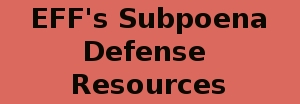
The Federal Communication Commission's Consumer Advisory Committee held its final meeting of the year October 20. New Media Rights is a member of the Consumer Advisory Committee, and we are part of the Consumer Empowerment, IP Transition, and Broadband (as co-chair) Working Groups.
In our final meeting, the group passed two important recommendations,
1) Recommendation Regarding Mobile Device Security
The Recommendation Regarding Mobile Device Security provides the FCC with guidance on how it can provide leadership to ensure consumers have the information they need to make meaningful choices about their privacy, to encourage innovation in mobile device security, and to make sure companies adhere to best practices in protecting consumer's privacy, safety, and security when they are online using a mobile device.
2) Recommendation Regarding Access for Eligible Individuals with Disabilities to Lifeline Service
This recommendation encourages the FCC to take direct steps to make sure that the expansion of Lifeline to mobile devices includes accessible devices for the disabled.
Read more about these recommendations and New Media Rights work at the FCC Consumer Advisory Committee








